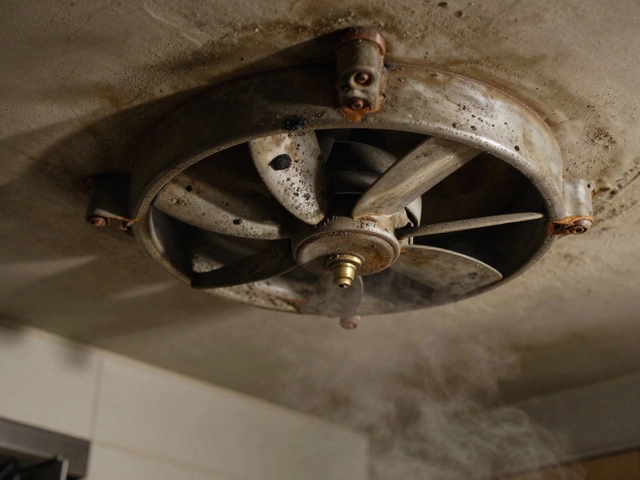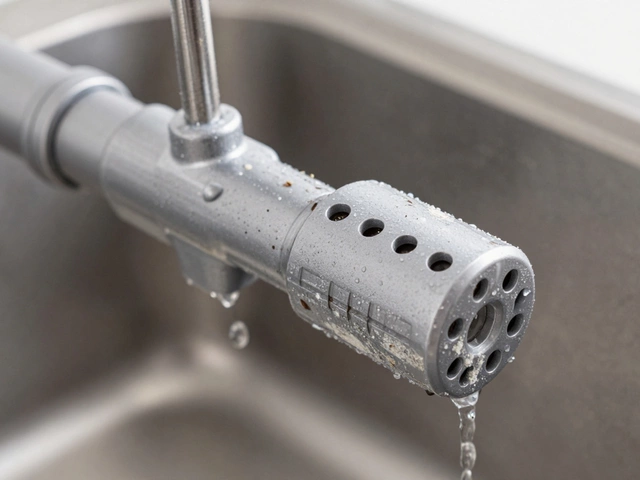Ventilation Tips for a Healthier Home
When thinking about ventilation, the movement of fresh air in and out of interior spaces to control temperature, humidity, and pollutants. Also known as airflow management, it helps prevent mold, reduces odors, and supports the efficient operation of appliances, the benefits go far beyond comfort. Pair that with a well‑chosen extractor fan, a device that pulls stale air out of kitchens or bathrooms and pushes fresh air in, and you have a simple recipe for cleaner rooms and longer‑lasting gear. Good kitchen ventilation, the system that removes cooking steam, smoke, and grease from the cooking area is a key part of that recipe, especially when you’re dealing with high‑heat appliances that can overheat without proper airflow. Finally, keeping an eye on appliance repair, regular maintenance and timely fixes for household machines and checking gas appliances, stoves, boilers, and heaters that use natural gas or LPG for leaks or blockages completes the safety loop.
Why Proper Airflow Matters for Every Appliance
Ventilation directly influences how well appliances perform. A fridge tucked behind a cupboard without clearance can overheat, making the compressor work harder and shortening its lifespan. Likewise, a dishwasher that sits in a stale, humid corner may develop foul smells faster. The simple semantic triple here is: Ventilation improves appliance efficiency. When fresh air circulates, heat dissipates, and moisture evaporates, reducing wear on motors and seals. This is why many manufacturers recommend at least 10 cm of space behind radiators and free‑standing ovens.
Extractor fans come into play when you’re cooking or using a gas stove. They require electrical safety checks because a faulty fan can cause short‑circuits, especially in damp environments. Installing a fan with the right cubic feet per minute (CFM) rating for your kitchen size ensures you capture smoke without creating excess noise. The relationship can be expressed as: Extractor fan needs proper sizing to manage kitchen ventilation effectively. If you underestimate the CFM, you’ll notice lingering odors; overestimate, and you waste energy.
Kitchen ventilation isn’t just about fans. It includes passive elements like vent hoods, window placement, and even the layout of cabinets. A well‑designed hood captures grease before it settles on surfaces, which cuts down on cleaning time and keeps the kitchen safer from fire hazards. This demonstrates the triple: Kitchen ventilation reduces fire risk by removing combustible grease particles. When you combine a hood with an extractor fan, you get a layered defense that protects both the structure and the appliances inside.
Regular appliance repair checks become the third pillar of a safe household. During a standard service, a technician will inspect seals on fridges, test heating elements on ovens, and verify that gas connections on stoves are leak‑free. These checks create a feedback loop: Appliance repair identifies ventilation issues before they cause bigger problems. For example, a clogged vent on a dryer can trigger overheating, which a technician would spot and clear before a fire starts.
Gas appliances add another layer of complexity. Poor ventilation around a gas boiler can lead to carbon monoxide buildup, a silent danger. The rule of thumb is to ensure a minimum of 15 cm of free space around any gas‑fired unit and to have a functional extractor or vent that directs gases outside. This satisfies the triple: Gas appliances need dedicated ventilation to prevent hazardous emissions. A simple carbon monoxide detector paired with good airflow offers peace of mind.
All these pieces—ventilation, extractor fans, kitchen airflow, repair routines, and gas safety—fit together like a puzzle. When one piece is missing, the whole system suffers. Think of your home as a living organism: breath in fresh air, expel waste, and keep the vital organs—your appliances—running smoothly. The next section will guide you through practical steps to audit your current setup and make quick upgrades.
Below you’ll find a curated collection of articles that dive deeper into each of these topics. Whether you’re looking for DIY fan troubleshooting, a checklist for gas appliance safety, or tips on extending the life of your refrigerator, the posts ahead give you the facts and step‑by‑step advice you need to turn good ventilation into great home performance.
Leaving an extractor fan on can be a common practice, especially in areas prone to humidity like kitchens and bathrooms. While it might seem harmless, improper use could lead to increased energy costs and potential wear and tear on the fan. This article explores when it's safe to leave your fan running, offers tips on maintenance, and provides interesting insights to help optimize your extractor fan's efficiency.


